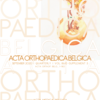Distal Chevron versus Scarf for hallux valgus. A comprehensive meta-analysis of comparative studies
hallux valgus ; chevron osteotomy ; scarf osteotomy
Published online: Jun 12 2021
Abstract
An amazing number of surgical techniques have been reported to treat hallux valgus (HV) deformity. The most two popular are the Chevron and the Scarf osteotomies. Both claim to generate good correction of the deformity. The aim of this meta-analysis is to look for significant outcome differences between both treatments and their variants. A comprehensive search on Medline, Embase, Scopus, Web of Science, Cochrane Library and Google Scholar was conducted. Literature search, data extraction, and quality assess- ment were conducted by two independent reviewers. The outcomes included radiological angular para- meters and complications. Nine studies including 630 patients (689 foot : 320 Chevron- or variants and 286 Scarf), met the inclusion criteria. Comparing all variant types of Chevron to Scarf showed no difference for all outcomes. However, subgroup ana- lyses demonstrated the following for the HV angle (HVA) correction : a) Scarf generated significantly better correction when compared to classical Chevron and (P < 0.0001), b) significance was lost when Scarf was compared to the extended Chevron with a long plantar limb, c) mild significance found in favor of percutaneous Chevron + Akin versus Scarf + Akin (p = 0.01), d) 3 cases (1.3%) of osteonecrosis of the first metatarsal head post Chevron and none after Scarf. This meta-analysis demonstrated that Scarf produced better HV angle correction than open classical Chevron. However, a Chevron with an extended plantar limb yielded similar HV angle correction compared to Scarf. This is likely due to the higher potential of lateral translation provided by the broader surface of a long plantar limb. The results of the small pooled sample of the subgroups of percutaneous Chevron versus Scarf could have been biased by the complementary Akin osteotomy.
